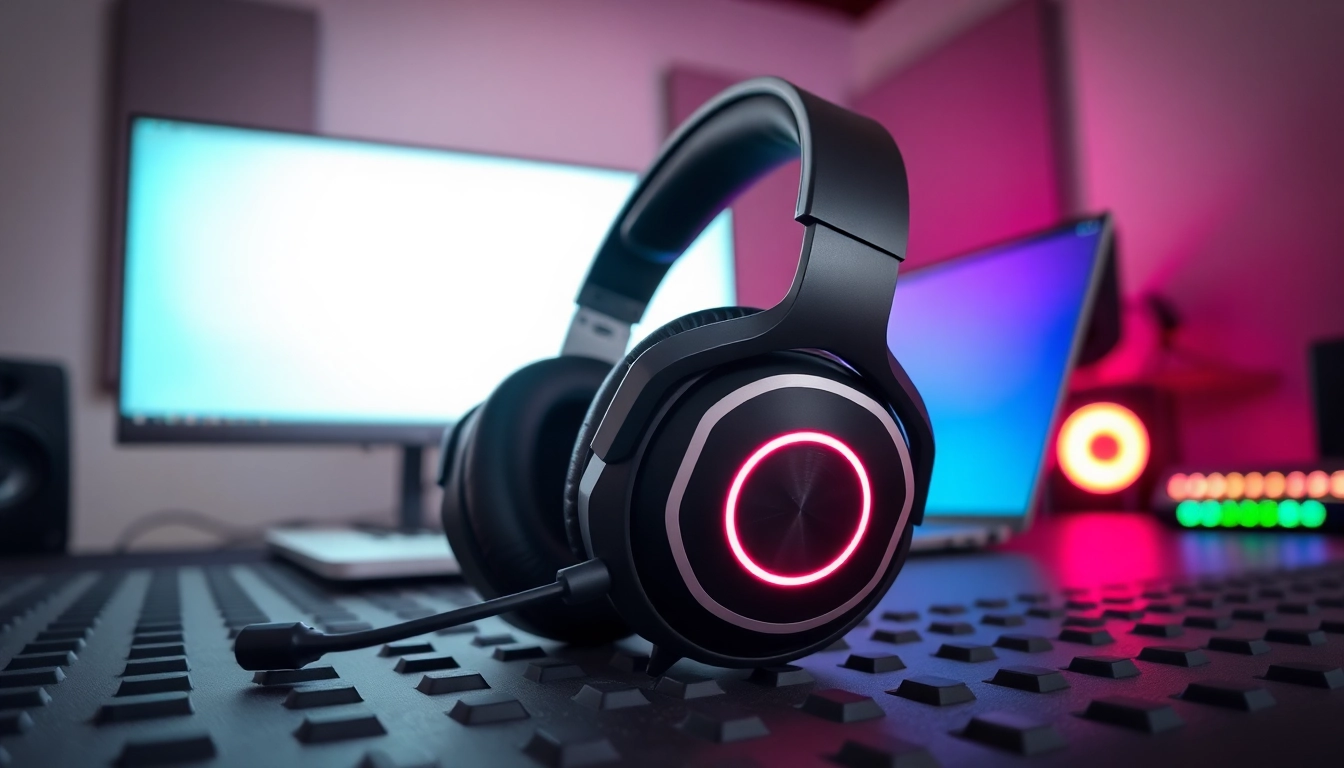
Understanding the Headset: Types and Features
Headsets have become an integral part of our daily lives, revolutionizing how we communicate, enjoy entertainment, and interact with technology. Choosing the right Headset can enhance your audio experience significantly. This article will cover various types of headsets, their features, and how to select the best one for your needs.
Wired vs. Wireless Headsets
When it comes to headsets, one of the primary distinctions is between wired and wireless options. Both types have their advantages and drawbacks, and your choice often depends on your specific usage scenario.
Wired Headsets
Wired headsets are connected directly to your device using an audio jack or a USB port. They are often praised for their reliability, as they do not depend on battery power for operation. The sound quality in wired headsets tends to be superior due to uninterrupted data transmission, making them ideal for audiophiles who demand the best sound experience.
Wireless Headsets
Wireless headsets utilize Bluetooth or other wireless technologies to connect to devices. They offer the convenience of mobility and freedom of movement, which is particularly useful in environments where users need to move around, such as during exercise or while multitasking at work.
However, wireless headsets require charging, and their audio quality can sometimes be compromised by interference, especially in crowded areas. Despite these minor drawbacks, advancements in Bluetooth technology continue to improve their reliability and sound quality.
Noises Cancellation Technologies
Noise cancellation is a crucial feature in modern headsets, improving the listening experience by minimizing unwanted background noise. There are two types of noise cancellation technologies available: passive and active.
Passive Noise Cancellation
Passive noise cancellation relies on the physical design of the headset to block out ambient noise. Over-ear models, for example, provide a seal around the ears, which helps to prevent external sounds from interfering with your audio experience. This type is typically lighter on your wallet but may not be as effective in extremely noisy environments.
Active Noise Cancellation
Active noise cancellation (ANC) uses microphones and technology to analyze and counteract external noise. This process cancels out harmful sound waves, allowing users to enjoy their media with greater clarity. ANC headsets are often more expensive, but they are particularly beneficial for users who travel frequently or work in loud environments.
Microphone Options for Optimal Communication
The microphone quality within a headset plays a vital role in your ability to communicate clearly. Quality headsets often feature multiple microphone options:
Boom Microphones
These are separate microphones that can be positioned close to the mouth for optimal sound capture. Boom microphones are particularly popular in gaming and office settings, offering superior audio clarity for voice calls and online communication.
Built-in Microphones
Some headsets come with built-in microphones that are integrated into the ear cups. While they may not provide quite the same clarity as boom microphones, they are convenient for casual use, such as taking phone calls or listening to audio on the go.
Choosing the Right Headset for Your Use Case
Selecting the appropriate headset largely depends on your intended use case. Below are several scenarios and the best options for each.
Best Headset for Gaming
Gaming headsets are designed with features that enhance the gaming experience. Look for headsets with surround sound capabilities, which allow for immersive audio that helps you pinpoint audio cues in games. A comfortable fit is also crucial for long gaming sessions.
Additionally, consider headsets with customizable RGB lighting and adjustable audio settings, including equalizers, to tailor your sound experience.
Professional Headset for Work
For professionals who spend a lot of time on calls, it is essential to choose a headset with excellent voice clarity and noise cancellation capabilities. Look for lightweight options that are comfortable for extended wear. A headset with a long battery life and an engaging microphone is also vital for seamless communication during meetings.
Lightweight Headset for Travel
Travelers benefit from headsets designed for portability. Lightweight, foldable designs are ideal for easy packing and comfort during long journeys. Noise cancellation can significantly enhance the travel experience by filtering out engine noise on planes or trains. Additionally, models with built-in microphones are great for taking calls without removing your headset.
Comparative Advantages of Headsets
Understanding the comparative advantages of different headsets can help consumers make informed choices that fit their needs.
Sound Quality: What to Expect
Sound quality refers to a headset’s ability to reproduce audio faithfully, ensuring that you experience music, games, and movies as intended. Factors influencing sound quality include driver size, frequency response, and total harmonic distortion levels. A high-quality headset aims for a balanced frequency response, allowing users to enjoy deep bass and clear highs without distortion.
Durability and Build Quality Considerations
The materials used in the construction of a headset significantly impact its durability and longevity. Look for headsets made of materials such as high-grade plastic or metal. Comfort is also essential—soft ear cushions and adjustable headbands contribute to a better fit and extended wear.
Comfort Features: Ear Cushions and Fit
Comfort should be a primary consideration, especially for users who wear headsets for extended periods. Features like soft ear cushions, ergonomic designs, and adjustable components can enhance comfort significantly. Over-ear headsets, while bulkier, typically offer more comfort for long periods compared to on-ear or in-ear designs.
How to Maintain Your Headset
Taking care of your headset will prolong its life and optimize your audio experience. Proper maintenance includes cleaning, troubleshooting, and knowing when to upgrade.
Cleaning and Care Tips
To maintain your headset’s quality, regular cleaning is necessary. Use a soft, dry cloth to wipe the earpads and band. For stubborn dirt, a damp cloth with mild soap can be used, provided you don’t get moisture into controls or openings. Always allow the headset to dry thoroughly to avoid mold or material degradation.
Troubleshooting Common Issues
Tech problems can occur, and knowing how to troubleshoot can save time and effort. Common issues include poor sound quality or connectivity problems. First, check for loose connections or low battery life. If sound issues persist, consider resetting the headset or checking compatibility with your device.
When to Upgrade Your Headset
Knowing when to upgrade your headset is crucial for maintaining an optimal audio experience. Signs that it might be time to invest in a new headset include deteriorating sound quality, physical damage, or compatibility issues with new devices. Monitor the performance and comfort of your headset regularly to determine if an upgrade is needed.
Future Trends in Headset Technology
The world of headset technology is continually evolving, bringing forth innovative features that enrich user experience.
Integrating AI for Enhanced Sound Quality
Artificial Intelligence (AI) integration in headsets is on the rise. Features such as personalized sound profiles, automatic ambient noise adjustment, and voice-command capabilities are redefining the listening experience. AI can analyze the acoustics of your surroundings and adjust audio settings for optimal clarity and enjoyment.
Wireless Innovations and Battery Life
As battery technology improves, the longevity of wireless headsets continues to enhance, with some models offering multiple days of playtime on a single charge. Fast charging capabilities allow users to get a substantial amount of usage time from a short charging period, adding to the convenience of wireless listening.
Potential Developments in Wearable Headsets
The concept of wearable headsets is gaining traction, with designs integrating augmented reality (AR) and virtual reality (VR) features. This shift could lead to immersive experiences that blend the digital world with daily life, paving the way for a new era of audio-visual interaction. As technology advances, the next generation of headsets may include features like health monitoring and improved integration with smart home devices.







